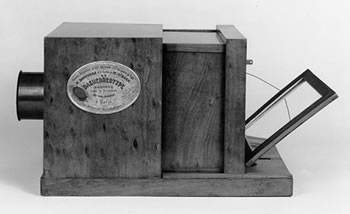
Camera Obsura
Louis Daguerre (Louis Jacques Mande Daguerre) was born near Paris, France on November 18, 17 89. A professional scene painter for the opera with an interest in lighting effects, Daguerre began experimenting with the effects of light upon translucent paintings in the 1820s. Louis Daguerre regularly used a camera obscura as an aid to painting in perspective, and this led him think about ways to keep the image still. He formed a partnership with Joseph Niepce to improve upon the photography process Niepce had invented. Niepce, who died in 1833, produced the first photographic image, however, Niepce's photographs quickly faded.Louis Daguerre made an important discovery by accident. In 1835, he put an exposed plate in his chemical cupboard, and some days later found, to his surprise, that the latent image had developed. Daguerre eventually concluded that this was due to the presence of mercury vapour from a broken thermometer. This important discovery that a latent image could be developed made it possible to reduce the exposure time from some eight hours to thirty minutes.



 |
| "Boulevard du Temple", taken by Daguerre in 1838 in Paris, was the first photograph of a person. The image shows a street, but because of the over ten minute exposure time the moving traffic does not appear. The exceptions are the man and shoe-shine boy at the bottom left, and two people sitting at a table nearby who stood still long enough to have their images captured. |
http://www.lunarlog.com/colorized-boulevard-du-temple-daguerre/